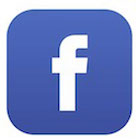Editorial
The Fig Tree advocates for gender justice in media
The Fig Tree draws readers into the journey to gender justice in media
In Afghanistan, women are denied access to higher education.
In Iran, protesters are jailed for challenging police killing a woman accused of improperly wearing her hijab.
Now gender cyberviolence seeps in with new ways to demean women.
Inequalities in the workplace throughout the U.S. and world continue to hire women part time for lower pay.
Women reporters need to out-compete men at doing media according to gender-biased values and news definitions.
Women still face barriers to advancement and various forms of micro-aggressions in the work place.
Entering journalism in the 1960s, I thought women's liberation had happened, but as a journalist I experienced bias in employment and in expectations of how to frame articles for newspapers.
The way we cover stories in The Fig Tree has been inspired by a Women in Media class in 1978 at the University of Oregon, by the 6th Assembly World Council of Churches (WCC) document on Credible Communication, by the WCC's Just Community of Women and Men, by participation in the Northwest Alliance for Media Literacy and by the World Association of Christian Communication (WACC), along with ongoing experience.
WACC works to enable people to be seen and heard as it addresses gender-based violence in media content. WACC invites people of faith to join the gender justice movement.
A webinar on "Rooting out Gender Cyberviolence" was part of the Global 16 Days of Action against gender-based violence from Nov. 25 to Dec. 10.
WACC Deputy General Secretary Sara Speicher told of a framework for churches and groups to be trained in social media monitoring, to do research collectively and to find tools to raise awareness in their communities and make recommendations for change to policy makers and social media companies.
"Let us be mindful that overcoming sexual- and gender-based violence is a 24-hours-a-day event, every single day of the week. May we all find God's strength and grace to protect, to prevent and to accompany," said Sara.
In addition, the WACC and International Federation of Journalists (IJF) have collaborated to publish the "Learning Resource Kit for Gender-Ethical Journalism and Media House Policy" to address gender disparities in news media content.
The kit's introduction points out that "little progress has been made since the 1995 Beijing Platform for Action called for more gender sensitivity in the media and self-regulatory mechanisms to eliminate gender-biased programming. Research such as the Global Media Monitoring Project (GMMP) shows just how marginalized women remain in the news. In 2010, the GMMP revealed that women make up only 24 percent of the people heard, read about or seen in the news."
The IFJ launched the Ethical Journalism Initiative to "confront ongoing discrimination in the news and reconnect journalists to their mission of enforcing core ethical standards," which call for challenging sensationalism and stereotypes, checking facts, abiding by codes of conduct, supporting independent self-regulatory bodies to uphold media quality and rebuild trust in the news.
Fair gender portrayal is essential, the IJF says, if media—including social media and online news—hope to reflect the role women and men play in society and "avoid unfair and outdated stereotypes."
The kit explores the impact of the gender gap in news content and identifies gender bias. In it, Book 1 is on conceptual issues pertaining to gender, media and professional ethics, and Book 2 is on gender-ethical reporting guidelines.
The books do not replace current media guidelines or ethics codes about not discriminating on gender, but add practical guidelines including women's representation in media content and gender balance in bylines and media structures.
"Gender portrayal is not a women's issue," the introduction asserts. "Portraying gender in a fair, ethical manner will only occur when it becomes a concern for everyone."
It adds that "the media content production environment is fraught with structural, ideological and practical complexities" that generate gender disparities and ways they influence perceptions of and relationships between women and men.
Our readers have been part of the journey to gender justice in media. The Fig Tree newspaper seeks to model coverage that fosters a just community of women and men in churches, faith communities, in society and the world. We have written about it through the years, and highlight the wisdom of women and men in editorials, articles, bylines and subjects, as well as in inclusion of diverse faith, racial, cultural, generational communities.
We invite people to be partners to experience a model of solidarity in doing justice journalism, peace journalism, solutions journalism, inclusive journalism, faithful journalism that covers oft-neglected, overlooked, sidelined, misrepresented, stereotyped communities, including religion itself. We seek to embody those values in our organization, as well as on our pages.
Mary Stamp – Editor






